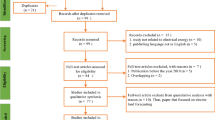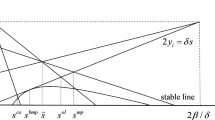Abstract
The increasing penetration of inflexible and fluctuating renewable energy generation is often accompanied by a sequential market setup, including a day-ahead spot market that balances forecasted supply and demand with an hourly time resolution and a balancing market in which flexible generation handles unexpected imbalances closer to real-time and with a higher time resolution. Market characteristics such as time resolution, the time of market offering and the information available at this time, price elasticities of demand and the number of market participants, allow producers to exercise market power to different degrees. To capture this, we study oligopolistic spot and balancing markets with Cournot competition, and formulate two stochastic equilibrium models for the sequential markets. The first is an open-loop model which we formulate and solve as a complementarity problem. The second is a closed-loop model that accounts for the sequence of market clearings, but is computationally more demanding. Via optimality conditions, the result is an equilibrium problem with equilibrium constraints which we solve by an iterative procedure. When compared to the closed-loop solution, our results show that the open-loop problem overestimates the ability to exercise market power unless the market allows for speculation. In the presence of a speculator, the open-loop formulation forces spot and balancing market prices to be equal in expectation and indicates substantial profit reductions, whereas speculation has less severe impact in the closed-loop problem. We use the closed-loop model to further analyse market power issues with a higher time resolution and limited access to the balancing market.
Similar content being viewed by others
Notes
Renewables 2017, International Energy Agency, Report, 2017.
See https://www.nordpoolspot.com for the functioning of these markets.
See http://m.omie.es.
Assuming that \(x_i^{max}\ge 0\), this follows from feasibility of the problem, cf. Slater’s condition (Boyd and Vandenberghe 2004).
Energinet dk’s analyseforudsætninger 2014–2035, https://energinet.dk.
Elproduktionsomkostninger, https://ens.dk.
References
Allaz B, Vila J-L (1993) Cournot competition, forward markets and efficiency. J Econ Theory 59(1):1–16
Andruszkiewicz J, Lorenc J, Weychan A (2019) Demand price elasticity of residential electricity consumers with zonal tariff settlement based on their load profiles. Energies 12(22):1–22
Borenstein S, Bushnell J, Knittel CR, Wolfram C (2008) Inefficiencies and market power in financial arbitrage: a study of California’s electricity markets. J Ind Econ 56(2):347–378
Boyd S, Vandenberghe L (2004) Convex optimization. Cambridge University Press, Cambridge
Bylling HC, Pineda S, Boomsma TK (2020) The impact of short-term variability and uncertainty on long-term power planning. Ann Oper Res 284:199–223
Gülpınar N, Oliveira FS (2014) Analysis of relationship between forward and spot markets in oligopolies under demand and cost uncertainties. CMS 11(3):267–283
Hobbs BF (2001) Linear complementarity models of Nash-Cournot competition in bilateral and POOLCO power markets. IEEE Trans Power Syst 16(2):194–202
Hu X, Ralph D (2007) Using EPECs to model bilevel games in restructured electricity markets with locational prices. Oper Res 55(5):809–827
Ito K, Reguant M (2016) Sequential markets, market power, and arbitrage. Am Econ Rev 106(7):1921–57
Kazempour SJ, Zareipour H (2014) Equilibria in an oligopolistic market with wind power production. IEEE Trans Power Syst 29(2):686–697
Morales González JM, Zugno M, Pineda S, Pinson P (2014) Electricity market clearing with improved dispatch of stochastic production. Eur J Oper Res 235(3):765–774
Murphy FH, Smeers Y (2005) Generation capacity expansion in imperfectly competitive restructured electricity markets. Oper Res 53(4):646–661
Rintamäki T, Siddiqui AS, Salo A (2020) Strategic offering of a flexible producer in day-ahead and intraday power markets. Eur J Oper Res 284(3):1136–1153
Shanbhag UV, Infanger G, Glynn PW (2011) A complementarity framework for forward contracting under uncertainty. Oper Res 59(4):810–834
Song Y, Ni Y, Wen F, Hou Z, Wu FF (2003) Conjectural variation based bidding strategy in spot markets: fundamentals and comparison with classical game theoretical bidding strategies. Electr Power Syst Res 67(1):45–51
Twomey P, Neuhoff K (2010) Wind power and market power in competitive markets. Energy Policy 38(7):3198–3210
Ventosa M, Baíllo Á, Andrés R, Rivier M (2005) Electricity market modeling trends. Energy Policy 33(7):897–913
Weber RJ (1981) Multiple-object auctions. Technical report, Discussion paper
Wei J-Y, Smeers Y (1999) Spatial oligopolistic electricity models with Cournot generators and regulated transmission prices. Oper Res 47(1):102–112
Wogrin S, Hobbs BF, Ralph D, Centeno E, Barquin J (2013) Open versus closed loop capacity equilibria in electricity markets under perfect and oligopolistic competition. Math Program 140(2):295–322
Zhang D, Xu H, Wu Y (2010) A two stage stochastic equilibrium model for electricity markets with two way contracts. Math Methods Oper Res 71(1):1–45
Acknowledgements
T. K. Boomsma acknowledges support from the projects SAVE-E, Energy savings: Closing the energy efficiency gap, funded by The Danish Council for Strategic Research, and AHEAD, Analyses of Hourly Electricity Demand, funded by Energiteknologisk Udviklings- og Demonstrationsprogram (EUDP) under the Danish Energy Agency.
Author information
Authors and Affiliations
Corresponding author
Additional information
Publisher's Note
Springer Nature remains neutral with regard to jurisdictional claims in published maps and institutional affiliations.
Appendices
Appendix A. Nomenclature
Parameters | Units | |
|---|---|---|
\(d_h^{{da}}\) | MWh | Net spot market (forecasted) demand in hour h |
\(\alpha _{h}^{{da}}\) | DKK/MWh\(^2\) | Slope of the inverse demand curve for hour h |
\(\beta _{h}^{{da}}\) | MWh | Intercept of the inverse demand curve for hour h |
\(d_{t\omega }^{{ba}}\) | MWh | Net balancing market (realized) demand in time interval t and scenario \(\omega \) |
\(\alpha _{t}^{{da-bal}}\) | DKK/MWh\(^2\) | Slope of the inverse demand curve for time interval t with respect to forecasted demand |
\(\alpha _t^{{ba}}\) | DKK/MWh\(^2\) | Slope of the inverse demand curve for time interval t with respect to |
realized demand | ||
\(\beta _{t\omega }^{{ba}}\) | MWh | Intercept of the inverse demand curve for time interval t and scenario \(\omega \) |
\(x_{ih}\) | MWh | Spot market offer by producer i in hour h |
\(x_{it\omega }^+\) | MWh | Up-regulation offer by producer i in time interval t and scenario \(\omega \) |
\(x_{it\omega }^-\) | MWh | Down-regulation offer by producer i in time interval t and scenario \(\omega \) |
\(x_{i}^{max}\) | MW | Spot market capacity by producer i |
\(a_i\) | DKK/MWh\(^2\) | Production cost parameter of producer i |
\(b_i\) | DKK/MWh | Production cost parameter of producer i |
\(\gamma _i^+\) | DKK/MWh | Balancing cost parameter of producer i |
\(\gamma _i^-\) | DKK/MWh | Balancing cost parameter of producer i |
\(\theta _{ih}\) | DKK/MWh\(^2\) | Spot market price response for hour h and producer i |
\(\theta _{it}^{{da}}\) | DKK/MWh\(^2\) | Balancing price response for time interval t and producer i with respect to forecasted demand |
\(\theta _{it}^{{ba}}\) | DKK/MWh\(^2\) | Balancing price response for time interval t and producer i with respect to realized demand |
Appendix B. Proof of Proposition 1
Proof
The Hessian of the function \(f_{it\omega }(\cdot )\) is
The third order principal minor is zero, one of the second order principal minors is likewise zero whereas the other two are \(4\tau (\theta _{ih}-\tau a_i)(\theta ^{{bal}}_{it}-a_i)-(\theta ^{{da}}_{it}-2\tau a_i)^2\), and one of the first order principal minors is \(2\tau \big (\theta _{ih}-\tau a_i\big )\) whereas the other two are \(2\big (\theta _{it}^{{bal}}-a_i\big )\).
Since \(\theta _{ih}, \theta _{it}^{{bal}}\le 0\) all first order principal minors are non-positive, and by Assumption 1, all second order principal minors are non-negative. As a result, the Hessian is negative semi-definite, and hence, the function is concave. \(\square \)
Appendix C. Proof of Proposition 2
Proof
If \(\underline{\sigma }_{it\omega }^{+}=\underline{\sigma }_{it\omega }^{-}=0\), then (9b), (9c), (9g) and (9i) implies that
By adding the two inequalities,
which cannot be true. We consider the remaining cases.
Let \(\underline{\sigma }_{it\omega }^{+}=0,\underline{\sigma }_{it\omega }^{-}>0\). The conditions (9b), (9c), (9f), (9g), (9h) and (9i) are then
If \(\bar{\sigma }_{it\omega }^{-}=0\), then this is equivalent to
There are now two cases, that is,
and
The former is the same as
and the latter is the same as
Let \(\underline{\sigma }_{it\omega }^{+}>0,\underline{\sigma }_{it\omega }^{-}=0\). By similar reasoning, we obtain the two cases
and
Finally, let \(\underline{\sigma }_{it\omega }^{+}>0,\underline{\sigma }_{it\omega }^{-}>0\). The KKT-conditions are
If \(\bar{\sigma }_{it\omega }^{+}=\bar{\sigma }_{it\omega }^{-}=0\), then this is equivalent to
This is the same as
\(\square \)
Appendix D. Assumptions on the price response parameters
Let \(F:\mathbb {R}^{|I||H|(1+2|T_h||\Omega |)}\rightarrow \mathbb {R}^{|I||H|(1+2|T_h||\Omega |)}\) be the vector-function with entries
for \(i\in I, t\in T_h, h\in H, \omega \in \Omega \). Note that F is continuously differentiable.
A necessary condition for the equilibrium problem to have an equivalent optimization problem is the existence of a function \(z:\mathbb {R}^{|I||H|(1+2|T_h||\Omega |)}\rightarrow \mathbb {R}\), serving as the objective, with \(F=\nabla z\). Such function exists if and only if the Jacobian matrix of F is symmetric (Theorem 4.2 in Gabriel). More specifically, this requires
for \(i,j\in I\), which are the assumptions on the price response parameters.
Appendix E. Proof of Proposition 3
Proof
If \(\theta _{hi}:=\theta _h, \theta _{it}^{{da}}:=\theta _{t}^{{da}}=0, \theta _{it}^{{bal}}:=\theta _{t}^{{bal}}\), the KKT-conditions of the problem (14) are
(9d)–(9i) for all \(i\in I\) and (1), (2), (6), (7), where \(\lambda _h,\lambda _{t\omega }, t\in T_h, h\in H, \omega \in \Omega \) are free variables. A solution to the equilibrium problem satisfies the above with \(\lambda _h=\lambda _{t\omega }=0, t\in T_h, h\in H, \omega \in \Omega \).
If also \(\theta _h=-\alpha _{h}^{{da}}, \theta _{t}^{{da}}=-\alpha _{t}^{{da-bal}}\tau , \theta _{t}^{{bal}}=-\alpha _t^{{bal}}\), the above are the KKT-conditions of (15). \(\square \)
Appendix F. 30-minute market clearing of the balancing market under perfect competition
Table 13 shows the results under perfect competition.
Appendix G. 30-minute market clearing of the balancing market under open-loop Cournot
Table 14 shows the open-loop Cournot results. For the base case (i), the solution is the same as with hourly time resolution in the balancing market, cf. Table 5. With intra-hourly variations of inelastic demand, profits increase by 25.63%.
Appendix H. Proof of Lemma 1
Consider the (upper-level) objective function:
where \(x_{it\omega }^{+}:=x_{it\omega }^{+}(x_{ih};x_{-ih})\) and \(x_{it\omega }^{-}:=x_{it\omega }^{-}(x_{ih};x_{-ih})\).
When it exists, define the derivative as
For \(\theta _{it}^{{bal}}=0, i=1,2\), this reduces to
since \(D_{iit\omega }^+=0\) when \(i\in I_{t\omega }^{+,\le }\) and \(D_{iit\omega }^-=0\) when \(i\in I_{t\omega }^{-,\le }\), cf. Proposition 5, \(p^{{bal}}_{t\omega }-{\partial c_i}/{\partial x_{it\omega }^+}=0\) for \(i\in I_{t\omega }^{+,*}\) and \(p^{{bal}}_{t\omega }+{\partial c_i}/{\partial x_{it\omega }^-}=0\) for \(i\in I_{t\omega }^{-,*}\), and \(x_{it\omega }^-=0\) when \(i\in I_{t\omega }^{+,\ge }\) and \(x_{it\omega }^+=0\) when \(i\in I_{t\omega }^{-,\ge }\), cf. Proposition 4.
When it exists, the derivative of this is
For \(a_i=\theta _{it}^{{da}}=0, i=1,2\), the second order derivative is non-positive and constant. Hence, the function \(f_{ih}(x_{ih};x_{-ih})\) is piecewise quadratic and concave in \(x_{ih}\) (and thus, differentiable on each quadratic and concave segment). Non-concavity and non-differentiability may occur when \(x_{jt\omega }^{+,*}(x_{jh},x_{-jh})=0,x_{jt\omega }^{+,*}(x_{jh},x_{-jh})=\tau (x_j^{max}-x_{jh}), x_{jt\omega }^{-,*}(x_{jh},x_{-jh})=0\) or \(x_{jt\omega }^{-,*}(x_{jh},x_{-jh})=\tau x_{jh}\) for some \(j=1,2\).
Appendix I. Including ramping
Let \(H=\{h_1,\dots ,h_H\}\) and \(T_h=\{t_{h1},\dots ,t_{hT}\}\). For \(i\in I\), ramping restrictions are given by
The KKT-conditions of the open-loop equilibrium with ramping restrictions are
where \(x_{ih-1}, x_{it_{h-1T}\omega }^+, x_{it_{h-1T}\omega }^-\) are given parameters for \(h=h_1\). The adaptation of the KKT-conditions of the closed-loop equilibrium with ramping is similar.
Rights and permissions
About this article
Cite this article
Boomsma, T.K., Pineda, S. & Heide-Jørgensen, D.M. The spot and balancing markets for electricity: open- and closed-loop equilibrium models. Comput Manag Sci 19, 309–346 (2022). https://doi.org/10.1007/s10287-021-00418-4
Received:
Accepted:
Published:
Issue Date:
DOI: https://doi.org/10.1007/s10287-021-00418-4




